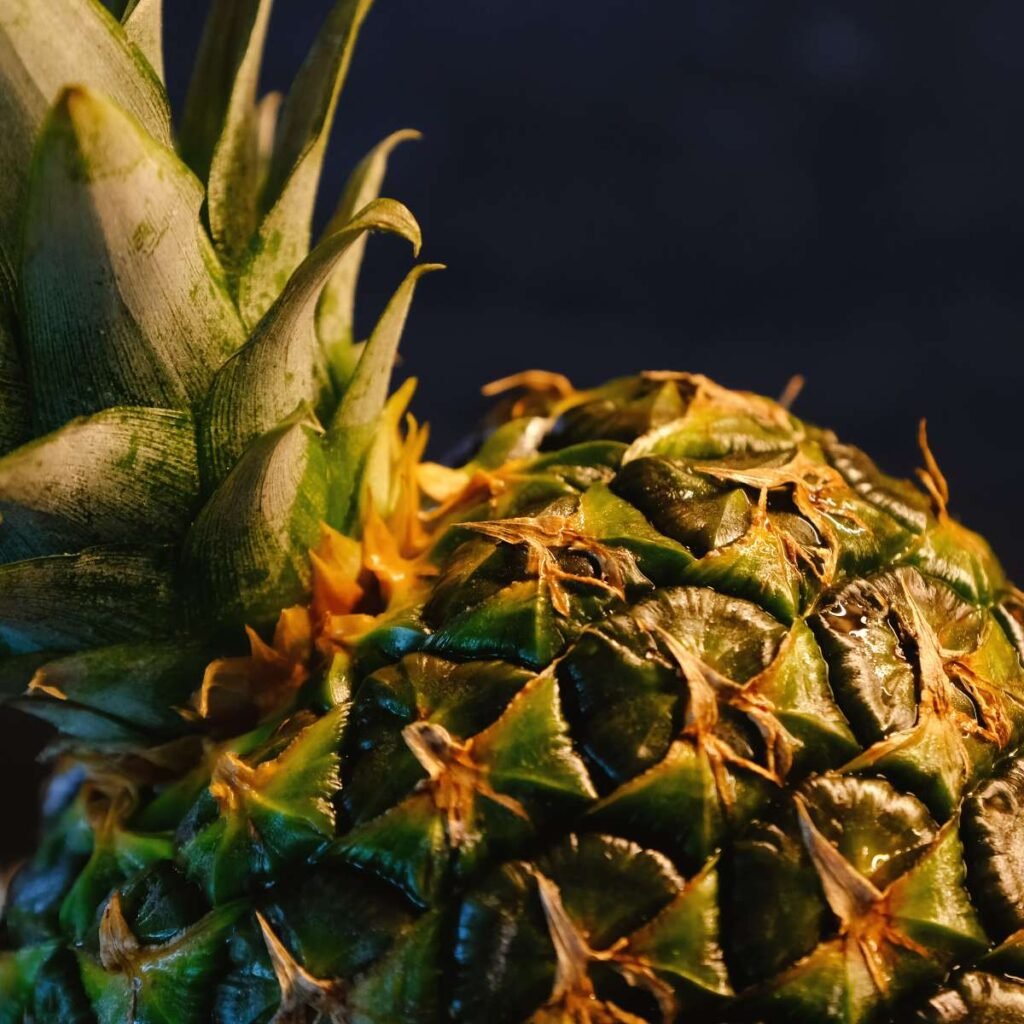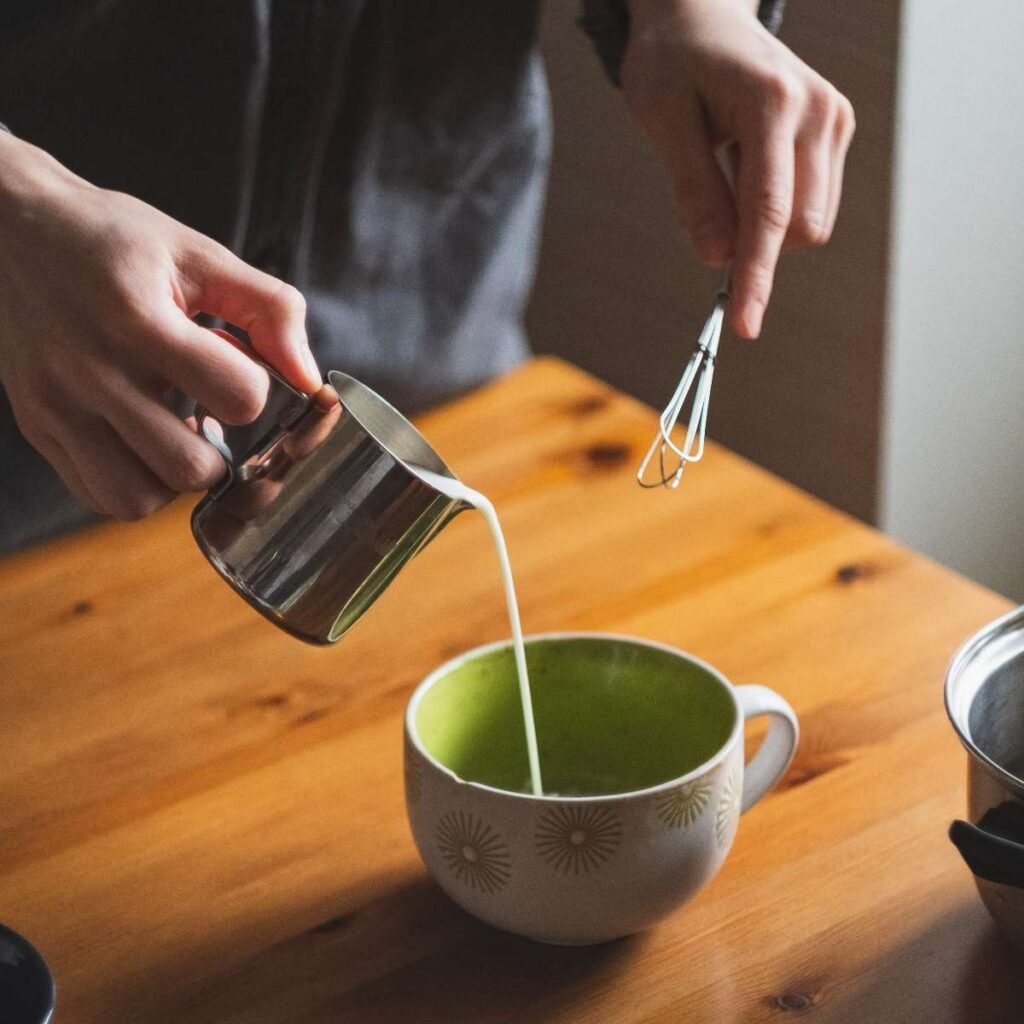Should pineapple be slimy or not? We’re about to get to the bottom of it and figure out if sliminess is a good thing or a bad thing when it comes to this tropical fruit.
Now picture this: you take a bite of juicy pineapple, and it feels a little slimy. Boom!! confusion strikes! Is it still good to eat, or has it gone bad?
I’m here to unravel the mystery behind the texture of pineapples and help you understand whether sliminess is normal or a reason to worry.
Pineapple is a versatile fruit that adds a burst of flavor to all kinds of dishes, from fruit salads to yummy desserts.
It has that bumpy skin and golden flesh that hides a delicious sweetness. But let’s talk about that texture that keeps us guessing!
When you sink your teeth into the pineapple, it can feel a bit slippery. But wait!!, I’m here to explain why.
Let’s get started
Identifying a Good Pineapple

Color and Appearance
When looking for a ripe pineapple, pay attention to its color. A good pineapple should have a vibrant green crown, which indicates freshness.
The body of the pineapple should be a mix of green and yellow – the more yellow, the riper it is.
However, avoid selecting a pineapple that is completely yellow, as it may be overripe.
Texture and Firmness
A ripe pineapple should feel firm to the touch but not rock hard. Gently press the fruit with your fingers, and it should give a little.
If it’s too soft, the pineapple might not be fresh. Also, the surface of the fruit should be free of blemishes, bruises, and any signs of mold.
Aroma and Smell
One of the best ways to identify a ripe pineapple is by its aroma. Flip the pineapple over and take a sniff at the bottom of the stem end.
A sweet, noticeable scent indicates that you’ve found a ripe pineapple. On the other hand, if the aroma is too strong or sour, the pineapple might be overripe or spoiled.
And if there’s no smell at all, the pineapple might not be ripe enough.
Remember to keep these factors in mind while choosing your pineapple: the color, texture, and aroma.
By doing so, you’ll most likely end up with a delicious and perfectly ripe pineapple to enjoy.
Signs of a Slimy or Overripe Pineapple
Brown Spots and Browning
It’s normal for a pineapple to have some brown areas, but when it starts to develop large, extensive brown spots, you might be dealing with an overripe pineapple.
These brown spots indicate that the fruit has started to break down and may become mushy or slimy.
Keep an eye on the colour of the flesh – it should be pale, golden yellow and not orange, dark, or even brown.
Mold and White Spots
Mould is never a good sign on any fruit, and that includes your pineapple.
Be careful to examine the outside as well as the inside for any white spots or furry patches, which could signal mould growth.
Mould may not only give your pineapple an off taste but can also be a sign of bacteria or decay, which can pose health risks.
Spongy Texture and Aroma
Fresh pineapple should have a firm texture. If you press the fruit and feel that it’s spongy or wet, this could be a sign of an overripe or slimy pineapple.
Another thing to consider is the aroma. A perfectly ripe pineapple will have a sweet, fruity smell coming from its base.
However, an overripe pineapple might have a less appealing aroma, potentially indicating that it’s not in the best condition for consumption.
Sour Smell and Vinegar
Smelling the pineapple can also help you decipher whether it’s past its prime. If you notice a sour or vinegar-like odor, this could be due to the fruit beginning to ferment.
A sour smell is a warning sign that your pineapple has gone past the point of being overripe and is now on its way to becoming inedible.
It’s best to avoid consuming a pineapple with this kind of odor, as it might be a sign of spoilage or the presence of bacteria.
How Pineapple Changes Over Time
Shelf Life and Storage
Fresh pineapples have a shelf life of about 1 to 2 days when stored at room temperature, while whole pineapples last up to 5 days in the refrigerator.
After cutting, store any leftover pineapple in an airtight container or plastic bag; it should last for 3 to 4 days in the refrigerator.
Proper storage can help extend the shelf life and prevent any unwanted sliminess, keeping your pineapple fresh and enjoyable.
Ripening Process
Unlike some fruits, pineapples don’t continue to ripen after they have been harvested.
Because of this, you’ll want to select a pineapple that’s already ripe when you bring it home from the store.
The ripening process can change the texture and taste of your pineapple. A perfectly ripe pineapple has a sweet aroma, a golden-brown color, and just the right amount of firmness.
Fermentation and Alcohol
As pineapples sit for extended periods, they may begin to ferment, producing alcohol and causing the fruit to become slimy.
This can happen both on the outside and the inside of the pineapple. Consuming fermented pineapple could lead to food poisoning, so it’s best to avoid consuming slimy pineapple.
If you’re looking to make a pineapple-based drink or dish, always use fresh, properly-stored pineapple to ensure you’re serving up a delicious and safe treat.
Storing and Cutting Pineapple
Proper Storage Methods
When it comes to storing pineapple, it’s important to keep a few things in mind.
First, you need to decide how soon you plan to eat it. If you don’t plan on eating it within two to three days, it’s best to store your pineapple in the fridge to keep it fresh and prevent it from becoming slimy.
If you’ll eat it within a couple of days, feel free to leave it on your countertop.
For even longer storage, consider cutting up your pineapple and storing it in the freezer.
Frozen pineapple makes a great addition to smoothies and desserts, and it’ll last for several months this way.
How to Cut a Pineapple
- Make sure that you have a clean cutting board and a sharp knife handy.
- Lay the pineapple on its side on your cutting board and cut off the top and bottom to create a flat surface. Stand the pineapple up on one of the flat ends.
- Carefully slice down the sides of the pineapple to remove the skin, following the curve of the fruit. Be sure not to cut too deeply, as this can waste the rich and juicy fruit.
- Once the skin is removed, check for any remaining “eyes” on the fruit and remove them with a small paring knife or the tip of your sharp knife.
- Cut the pineapple in half lengthwise and then into quarters.
- Slice away the tough core from each quarter and discard it.
- Finally, cut each pineapple quarter into bite-sized pieces.
Remember, while cutting your pineapple, always be gentle with the fruit and avoid using too much force.
This will prevent it from becoming mushy or slimy. Now, you’re ready to enjoy your delicious, non-slimy pineapple!
Bad Pineapple: Avoiding and Discarding
Deteriorating Pineapple
Sometimes, you might come across a pineapple that feels slimy when you cut into it. This could be an indication that the fruit has gone bad.
The flesh of the pineapple might start to darken in color and develop an off taste. If it’s just a little brown, that could mean it’s overripe but still safe to eat.
However, if the color has mostly turned to brown, it’s best to discard the fruit.
Another sign of a bad pineapple is its smell. If the pineapple has an unpleasant odor, it’s probably past its prime.
It’s essential to inspect the pineapple on the inside, too. When the flesh starts turning to a gold, orange, or brownish color, your pineapple is likely deteriorating.
Discarded Pineapple
If your pineapple appears to be slimy, and it’s evident from the smell, texture, and color that it’s past its prime, it’s time to discard it.
Consuming rotten fruit could lead to health issues, so it’s best to err on the side of caution.
While throwing away food may feel wasteful, remember that eating bad pineapple isn’t worth the potential health risks.
Prioritize your well-being and ensure that the pineapple you consume is fresh and safe to eat
In the future, to avoid dealing with bad pineapple, take note of the following tips:
- Store your pineapple properly, either in the refrigerator for a longer shelf life or on the countertop if you plan to consume it soon.
- Inspect the fruit before purchasing, checking for firmness and a pleasant aroma.
- Cut and eat your pineapple within a few days of purchasing to ensure its freshness.
By following these guidelines, you’ll be better equipped to enjoy delicious, fresh pineapple and avoid the disappointment of encountering a slimy, bad pineapple.
Frequently Asked Questions
How can I tell if a pineapple has gone bad?
You can tell if a pineapple has gone bad by its appearance, smell, and taste. If you notice the pineapple turning brown or having black, slimy areas, it is likely bad.
Also, if it smells sour or rotten, it’s time to discard it.
What are the signs of a rotten pineapple?
Signs of a rotten pineapple include browning, black or slimy spots on the fruit, a sour or rank smell, and a bitter or sour taste when consumed.
How does bad pineapple taste?
A bad pineapple may taste sour or bitter, which indicates that it is no longer fresh and should not be eaten.
Is it safe to eat slippery pineapple?
A slippery or slimy pineapple is usually a sign that it is starting to spoil. While it might not be immediately harmful, it’s best to avoid eating pineapple in this condition to prevent any potential foodborne illness.
Why does pineapple become slimy?
Pineapple becomes slimy when it starts to spoil due to the growth of microorganisms. This can happen if it’s been stored improperly or for too long.
Can I still eat pineapple with brown spots?
While a few brown spots on the pineapple might not be a major cause for concern, it’s best to remove those areas before eating the fruit.
However, if the browning is extensive or the pineapple has other signs of spoilage, such as a sour smell or slimy texture, it’s better to discard it.



